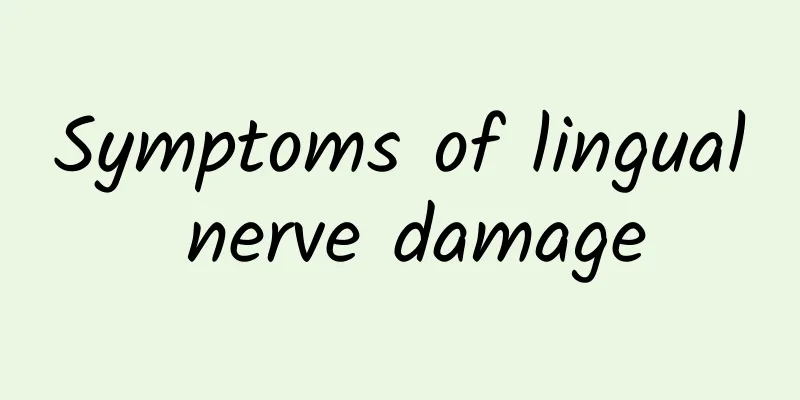What are the common diseases in neurosurgery?

|
Neurosurgery is a discipline based on surgery. It mainly studies the human nervous system, which includes the spinal cord, brain, nerves and peripheral nerves, as well as some accessory nerve tissues. If these nerve tissues are damaged, inflamed, infected by viruses, etc., they can cause great harm to the body and have a relatively high disability rate. Some of them can cause great harm to the patient's life safety. What are the common diseases in neurosurgery? 1. Traumatic brain injury, spinal cord injury This may be the disease with the longest history in neurosurgery and is the eternal treatment target of neurosurgery. Primary craniocerebral injury: scalp injury, skull fracture, concussion, cerebral contusion, brain stem injury, diffuse axonal injury, non-firearm open craniocerebral injury, firearm open craniocerebral injury Secondary craniocerebral injury: traumatic intracranial hematoma Brain and Spinal Cord Tumors The brain and spinal cord, like other organs in the body, can develop benign or malignant tumors, but malignant tumors of the nervous system are not called "cancer" like other common malignant tumors. The most common intracranial tumor is glioma. This is a malignant tumor with varying degrees of malignancy. Some patients may have no symptoms for several years, while others may only survive for a few months after being diagnosed. Other common intracranial tumors include pituitary tumors, meningiomas, and schwannomas. The clinical manifestations of intracranial tumors are diverse and are largely related to the location of the tumor. 3. Cerebrovascular disease It mainly refers to cerebral vascular diseases caused by non-traumatic reasons. As people's living standards improve, the incidence of diabetes, hypertension and abnormal lipid metabolism has increased sharply. As a result, the incidence of cerebrovascular diseases has also shown an upward trend. Hypertensive cerebral hemorrhage is the most serious complication of hypertension, with high mortality and disability rates. Surgical treatment may save lives under appropriate circumstances. In addition, intracranial aneurysms, cerebral vascular malformations, etc. are also common, which are the most common diseases in cerebrovascular surgery. This type of disease often requires cerebral angiography (CTA, MRI, DSA, etc.) to confirm the diagnosis. 4. Congenital diseases Including atlanto-occipital malformation, congenital intracranial arachnoid cyst, tethered cord syndrome, spina bifida, meningocele, meningocele, cerebellar tonsillar herniation malformation (Amold-Chiari malformation), corpus callosum malformation, Dandy-Walker malformation, etc. 5. Degenerative diseases of the cervical and lumbar spine ◆ Spinal fractures and spinal cord injuries: closed spinal cord injury, spinal cord firearm injury, spinal cord blade injury ◆ Intraspinal tumors: spinal schwannoma, intramedullary tumor, intraspinal metastatic tumor, congenital intraspinal tumor, spinal tumor ◆ Congenital diseases of the spine and spinal cord: Chiari malformation, syringomyelia, diastematomyelia, meningomyelocele, tethered cord syndrome, sacral canal cyst ◆ Spinal tuberculosis and inflammation ◆ Spinal degeneration: cervical spondylosis, lumbar disc herniation/bulging, ossification of the yellow ligament, thoracolumbar spinal stenosis, lumbar spondylolisthesis, instability, scoliosis 6. Functional Neurosurgery ◆ Pain and microvascular decompression surgery: trigeminal neuralgia, cancer pain, hemifacial spasm ◆ Surgical treatment of epilepsy: temporal lobe epilepsy, frontal lobe epilepsy, post-traumatic epilepsy, post-brain surgery epilepsy ◆ Treatment of extrapyramidal diseases: Parkinson's disease, torsion spasm, spasmodic torticollis ◆ Cerebrospinal fluid circulation disorders: hydrocephalus in adults, hydrocephalus in children, intracranial hypertension caused by intracranial venous sinus occlusion 7. Intracranial parasitic diseases It mainly includes cerebral cysticercosis, cerebral echinococcosis, etc. |
<<: Common types of arm tumors
>>: Top 10 common mental illnesses among girls
Recommend
What should I do if I have tongue ulcers? What causes tongue ulcers?
Tongue ulcers are characterized by recurrent ulce...
What is the reason for drooling when you wake up in the morning?
In daily life, many people will have a lot of sal...
Yellow sticky nasal discharge
Some people catch a cold every year, and once the...
Alum pillows can cure high blood pressure
Alum is a very common thing in daily life. But th...
If you can't enjoy yourself in bed, just rub it.
Insomnia is probably difficult to understand for ...
Early symptoms of AIDS
AIDS is a disease that most patients are worried ...
How does ginger remove body odor?
Ginger can not only be used as a common condiment...
Can diarrhea in early pregnancy cause miscarriage?
For women who have just become pregnant, they act...
Causes of left shoulder blade pain
The phenomenon of shoulder blade pain on the left...
How to regulate the tongue in traditional Chinese medicine
Traditional Chinese medicine is an ancient medica...
What causes hernia in adults?
Hernia is a relatively common disease, and the ma...
What should you eat to strengthen your libido, nourish your kidneys and produce sperm? What is the most nutritious way to eat?
As people age, many of them will experience back ...
Motor neurone disease treatment
When motor neuron disease occurs, some of your li...
Why does my knee make a sound and hurt when I bend it?
If there is a sound when you bend your knee and i...
What Chinese medicine kills Helicobacter pylori
In life, we all know that gastritis is generally ...









